Media | Articles
Alan Mann Racing Is Getting Back to Its Roots with the Mk1 Escort
A forest rally stage, Roger Albert Clark, bubble arches . . . All might spring to mind when we picture a Mk1 Ford Escort being driven in anger, but while competition-spec Escorts are synonymous with rallying, British team Alan Mann Racing was among the very first to develop the Mk1 for motorsport – and as a circuit racer no less.
Established in the 1960s but quickly on top of the game, AMR went on to win the 1968 British Saloon Car Championship (BSCC) with Frank Gardner driving its heavily modified Escort. The team also enjoyed success in the European Touring Car Championship (ETCC) and the Belgian, German, and South African Saloon Car Championships.

Now the DRVN Group has acquired a 50 percent stake in Alan Mann Racing, and is offering a “continumod” Mk1 Escort in part inspired by the Alan Mann original, which will be produced under a licensing agreement between Boreham Motorworks (another DRVN sub-brand) and Ford. It all makes for an appropriate moment to revisit the Alan Mann original.

Alan Mann Racing’s ties with Ford date back to the Blue Oval’s global Total Performance program, in which AMR initially ran factory Falcons in the 1964 Monte Carlo rally.
After finishing second on that outing to the Mini, AMR went on to win the 1964 Tour de France and 1965 European Touring Car Championship with the Mustang and Lotus Cortina, respectively. By then everyone knew its distinctive red-and-gold war paint meant business.
Marketplace
Buy and sell classics with confidence
The catalyst for the Escort race program came in 1966, when touring car racing switched from FIA Group 2 rules to Group 5, giving teams far more technical freedom—especially those competing to the more liberal U.K. regulations.


“We started off with the Falcon, using some of the Monte Carlo cars which were quite successful,” explains Alan’s son Henry Mann, now AMR managing director. (In fact, the Falcon set the first 100 mph-plus lap around Silverstone and won the 1967 BSCC). “But Ford was intending to release the Escort and wanted a front-running car for the BSCC and ETCC. Dad gave them an estimate, Ford agreed and—other than the accountant coming down to check things every now and again—they were pretty much left to it.”
While waiting for the Escort, AMR acquired a pair of Mk2 Lotus Cortinas that had previously done service with Team Lotus. They provided a similarly sized template on which to experiment with the basics, though ultimately the Escort was more compact, lighter, and had the far more aerodynamic shape.
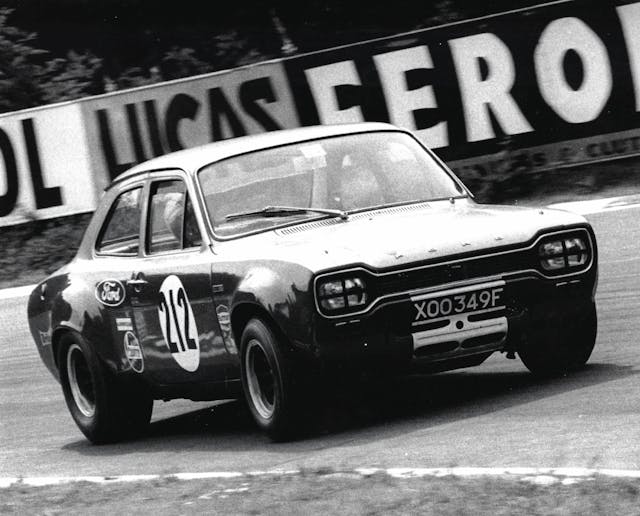
“Len Bailey [a design engineer who’d worked on the GT40 and was effectively at AMR on loan from Ford] worked up some ideas on it before the Escort was available,” explains Henry.
When the first Escort arrived at AMR’s workshops in November 1967, that preliminary work meant the team was immediately ready to go. “I think we probably were first to develop the Escort for competition, though Ford were no doubt sending them out to a few different people at that stage, and the factory outfit at Boreham would’ve been experimenting of course,” reasons Henry.
The strengthened Type 49 bodyshell used for export markets and rally cars was unavailable early on, so AMR built its race cars from an 1100 Super bodyshell and beefed it up considerably. It was also first to add the wider “bubble arches” for accommodating wider slick-shod wheels—a look now inseparable from the Mk1’s rallying exploits.

Pretty much everything was changed. The Escort steering rack was moved forward almost 4 inches and modified to pass straight through the engine crossmember, and the front suspension used the factory MacPherson strut as a sliding member while adding inboard coilover dampers.
The standard live rear axle became a bespoke five-link design. “Initially it was a four-link setup with a Watts linkage hanging off the diff housing, which meant it had a good roll center but it was still coil sprung,” explains Henry. “When Frank Gardner returned to the U.K. after contesting the Tasman series [a New Zealand and Australian race series held over the European winter], he said it was too stiff at the back. So the team came up with a torsion-bar arrangement that was heavily modified from Morris Minor parts.”
Most impressive of all was the Cosworth FVA engine. A 10,000 rpm, four-valve screamer from a Formula 2 car and based on the Escort Twin Cam engine, the FVA was basically half of the DFV V-8 that dominated Formula 1 for so many years. It produced 250–260 hp in a car weighing under 1985 pounds (though ETCC cars weren’t allowed 16-valve heads and used a dry-sumped 1.6-liter Twin Cam engine instead).
“The Escort was surprisingly quick fresh out of the box, even to the team,” says Henry. “My dad and a guy called Keith Greene were behind the wheel for the first tests—Keith was a technical guy for Armstrong dampers but a [former F1] racer, too. I have test notes from Goodwood over the winter—the Escort was doing 1:25.8 laps on its first day, which was seriously quick, much quicker than the Falcon.”

The Escort translated its speed to competition, with Peter Arundell, Jackie Oliver, Graham Hill, Roger Clark, and Gardner all driving the AMR car.
Gardner ultimately took the 1968 BSCC title, having swapped from the Cortina at round four of the 11-race championship, after the Escort had met its homologation requirements.
“They kept it conservative early on in terms of racing, but later in the year as they gained confidence, they opened it up a bit and beat everyone by a big margin,” say Henry.
Gardner also came runner-up the following year, though Group 5 rules had tightened by then and the FVA was outlawed.

Six AMR Escorts were produced in total, two to European spec. Jackie Oliver destroyed one in period at Goodwood, another—registered X00 346F—sold recently for more than £195K, while AMR retain the championship winner, registered X00 349F.
It’s this car that provides some of the inspiration for the DRVN contiumod Mk1 RS, and it has been digitally scanned to ensure the accuracy of new body shells that are engineered, built, and painted by DRVN.
However, all may not be as it seems: DRVN previously promised us that “the first continuation vehicle will be the Group 5 Ford Mk1 Escort.” Given the Escort it has just released is a “continumod” and DRVN promises to bring back a number of Ford high-performance icons, perhaps something a little closer to the Alan Mann Racing Mk1 could still be in the pipeline.


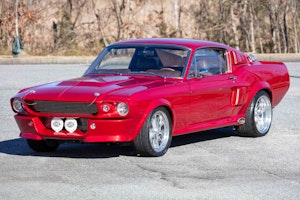


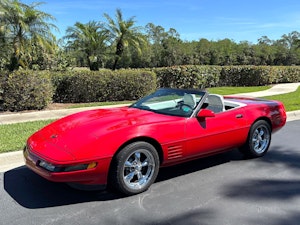

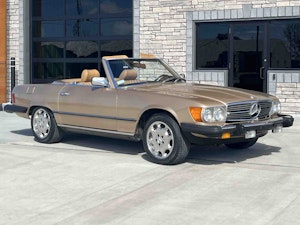

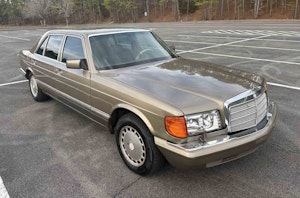












Very cool cars. I know for the Brits this Escort is a special car. We never got this version here in the states, our Escort was bit more plain.